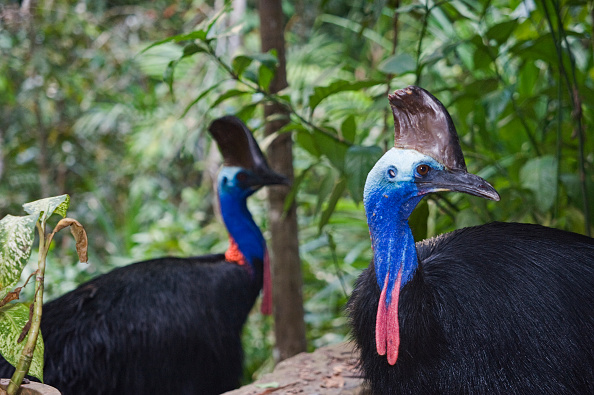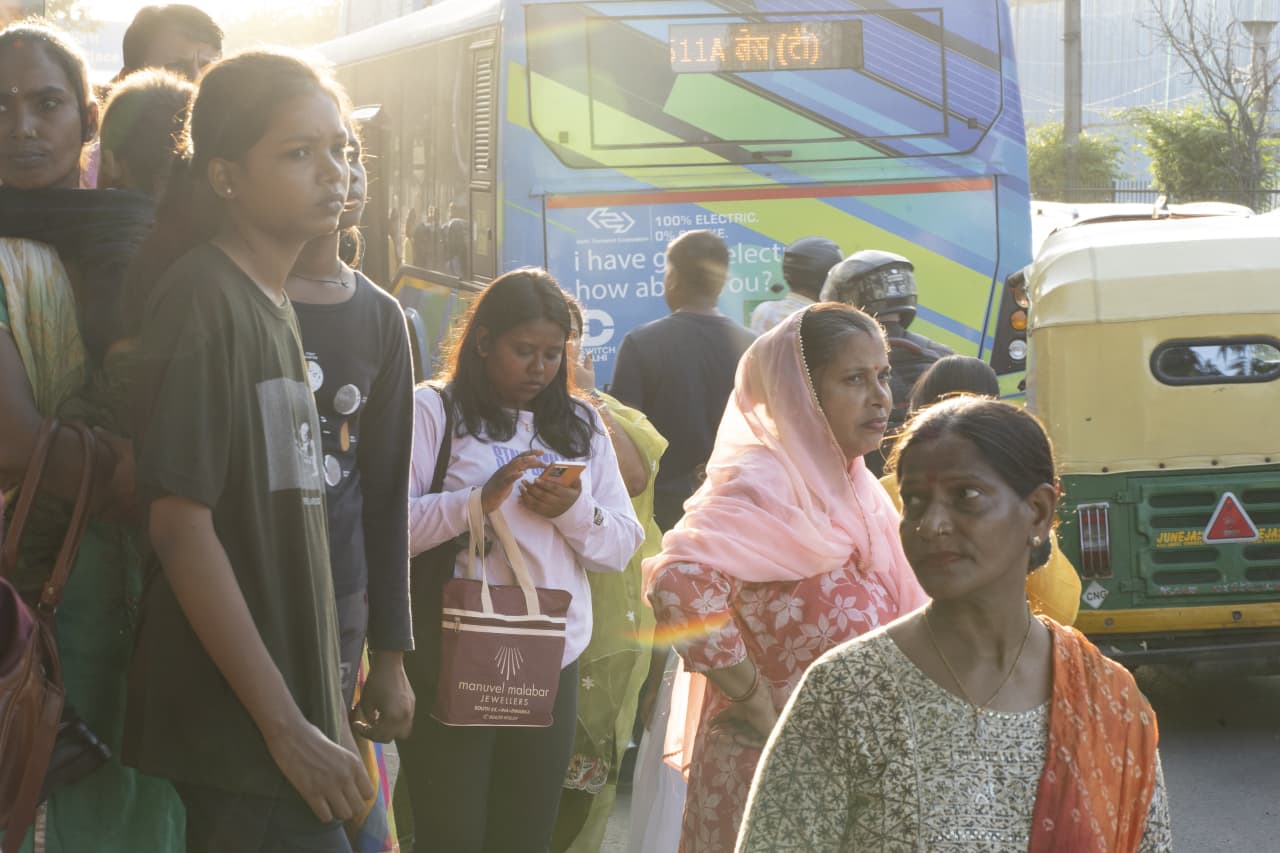Australia Wants to Turn Wilderness Restoration Into an Investable Market
Some are questioning whether there will be demand for so-called biodiversity credits
SYDNEY—Northern Australia’s tropical coast used to have a vast covering of lush rainforest that supported the cassowary, often called the world’s most dangerous bird. Now, one organization is developing a program they say will encourage landowners to reforest the area and create a habitat for native species.
Their plan: Cassowary Credits.
“The idea of the Cassowary Credit was about bringing in the large-scale investment that’s needed to really do that work to protect the valleys of the region from climate change,” said Sarah Hoyal, biodiversity and climate leader at nonprofit environmental group Terrain Natural Resource Management, which wants to sell credits to investors that are valued by how much land is restored to its native state over time.
Australia’s government has similar plans, albeit on a larger scale. On March 29, the government introduced legislation to create a nationwide market for so-called biodiversity credits, the first large advanced economy to undertake such an effort.
Australia is betting that businesses will be hungry to buy credits as they face pressure from shareholders and customers to be more socially responsible. If the market flourishes, Australia could be a model for harnessing money from the private sector to reverse environmental losses, but the plan is facing skepticism from investors and industry groups questioning how the credits will be valued and what will drive demand for them.
“Until there is an economic return, you will not get investors coming to nature projects except on a philanthropic basis, or some early stage voluntary action,” said Martijn Wilder, chief executive of Pollination, an advisory and investment company. The legislation is a good start, he said, but more needs to be done to show it can work.
Australia’s government argues that the plan offers a way for companies to invest in managing the environment without having to buy land. The market will also give landowners extra income, overcoming one of the roadblocks to conservation, and create jobs for indigenous communities that become involved in restoring the land, said Tanya Plibersek, the country’s environment minister.
Under Australia’s scheme, landowners would get a credit, in the form of a certificate, for conducting repair or preservation projects on their property. This credit can be sold on to businesses and individuals. To help these investors figure out how much each credit is worth, information such as how much land is being repaired or how long it will take will be disclosed. The credits would be tracked via a public register and overseen by a regulator.
How Australia tackles these issues could offer lessons for other countries considering ways to prevent nature loss. The U.N.’s environmental arm estimates that $384 billion annually—more than double current levels—needs to be invested by 2025 to protect against climate, biodiversity and land degradation.
Australia’s plan illustrates how some governments don’t think they can fill the funding gap alone and want the private sector to step up. Conservation efforts have largely focused on national parks or wildlife refuges. But with more than 60% of land in Australia owned privately, officials say that is no longer enough.
“We live in the extinction capital of the world—losing more mammals to extinction than any other continent,” said Ms. Plibersek.
The concept of using credits to achieve an environmental goal isn’t new. The European Union and several U.S. states allow trading in carbon credits as part of programs to reduce greenhouse gas emissions. A challenge for Australia’s scheme, however, is figuring out how to value nature itself.
“Biodiversity is inherently more complex than carbon and thus less divisible into interchangeable units,” said Dr. Jody Gunn, chief executive of the Australian Land Conservation Alliance, which represents organisations working to protect nature. “How many koalas is worth a hectare of protected rainforest?”
Some businesses will buy from the market voluntarily when it opens, but it remains to be seen that there will be enough to sustain the market in the short term, she said. That means the government would need to step in and become an active investor, Dr. Gunn said.
Ms. Plibersek said the government hasn’t decided whether to invest in nature projects, but the legislation allows it to do so.
As lawmakers figure out the mechanics of the market, some organisations are plowing ahead with separate plans to develop credits.
Wilderlands, an Australian company, sells credits for several projects, including the rehabilitation of privately owned land in South Australia state that was once used to graze cattle. The purpose of the project is to allow native animals and plants to thrive on the land, and not to use it for agriculture, said Wilderlands, which runs a marketplace for the credits. Buyers of its credits include Lendlease Group, a $3.38 billion Australian construction company, and Monash University, which wanted to showcase efforts to protect nature to its students.
In the northern tropics, much of the coastal lowland habitat of the cassowary has been cleared for farms and the growth of towns. The area is also threatened by cyclones, diseases such as avian tuberculosis and wild dogs. These threats have increasingly driven the bird, which can grow to two meters tall, to higher ground. The cassowary is listed by the government as endangered,
Restoring its lowland habitat will be a slow process. The value of Terrain’s proposed credit is tied to how the rainforest recovers at various points over 25 years. Terrain is developing its credits separately from the government’s effort to establish a national market and is awaiting further details before deciding if its own credits can be part of it.
“It will be 500 years before it’ll look like the rainforest that’s there now,” said Terrain’s Ms. Hoyal. “But it’ll be a substantial habitat at 25 years.”
 Copyright 2020, Dow Jones & Company, Inc. All Rights Reserved Worldwide. LEARN MORE
Copyright 2020, Dow Jones & Company, Inc. All Rights Reserved Worldwide. LEARN MORE
This stylish family home combines a classic palette and finishes with a flexible floorplan
Just 55 minutes from Sydney, make this your creative getaway located in the majestic Hawkesbury region.
The inflation rate ran at an annual pace of 2.2% in the quarter compared with a rise of 3.3% in the second quarter
SYDNEY—New Zealand’s inflation rate returned to within the central bank’s target band for the first time since early 2021 in the third quarter, opening a path to more supersized interest-rate cuts in coming months.
The inflation rate ran at an annual pace of 2.2% in the quarter, near the midpoint of the desired 1% to 3% target band, with some economists warning that the Reserve Bank of New Zealand must continue lowering the official cash rate at speed as a neutral policy rate is still well off in the distance.
The annual increase in inflation compares with a rise of 3.3% in the second quarter, StatsNZ said Wednesday. Inflation rose by 0.6% in quarterly terms.
The inflation data justifies the 75 basis points of cuts announced so far since August, with the RBNZ stepping up the pace of lowering the official cash rate last week by joining the Federal Reserve in slashing by 50 basis points.
Economists warn that there is a risk that inflation will undershoot the target band in coming quarters, especially if the RBNZ backs away from more significant cuts.
The official cash rate has so far fallen to 4.75% from 5.50%, with a neutral policy rate likely closer to 3.00%, according to economists.
New Zealand’s farm-rich economy has been in and out of recession for years as the RBNZ proved to be one of the more aggressive central banks globally when combating the inflation surge that emerged after the Covid-19 pandemic.
Economic activity remains flat and in need of resuscitation, especially with growth in China, its main trading partner, in a slowdown, economists said.
Higher rents were the biggest contributor to the annual inflation rate, up 4.5%. Almost a fifth of the annual increase in the consumer-price index was due to rent prices.
Prices for local authority rates and payments increased 12.2% in the 12 months to the third quarter, StatsNZ said. Prices for cigarettes and tobacco also rose sharply in line with an annual excise-tax increase.
Still, lower prices for gasoline and vegetables helped to offset rising prices, StatsNZ added.
This stylish family home combines a classic palette and finishes with a flexible floorplan
Just 55 minutes from Sydney, make this your creative getaway located in the majestic Hawkesbury region.






















